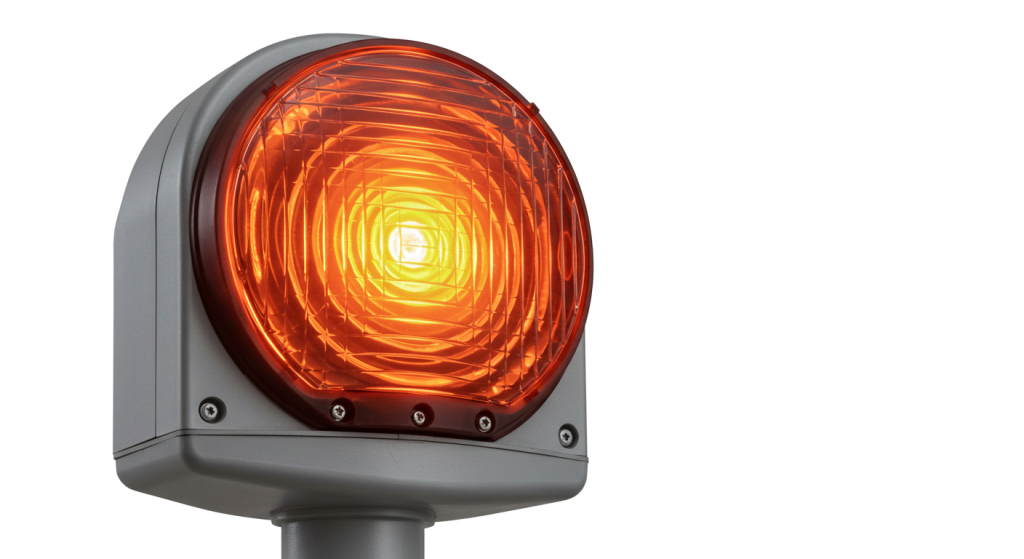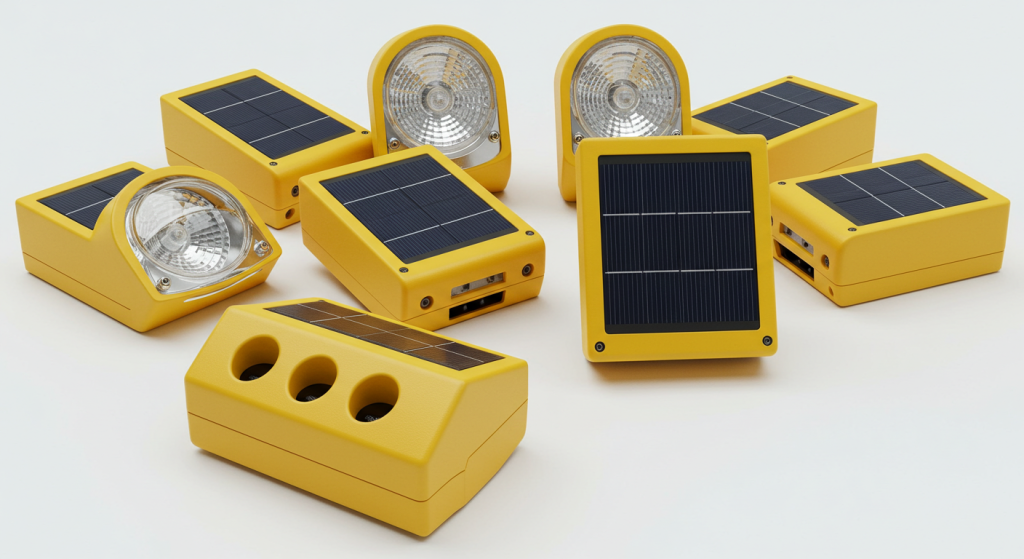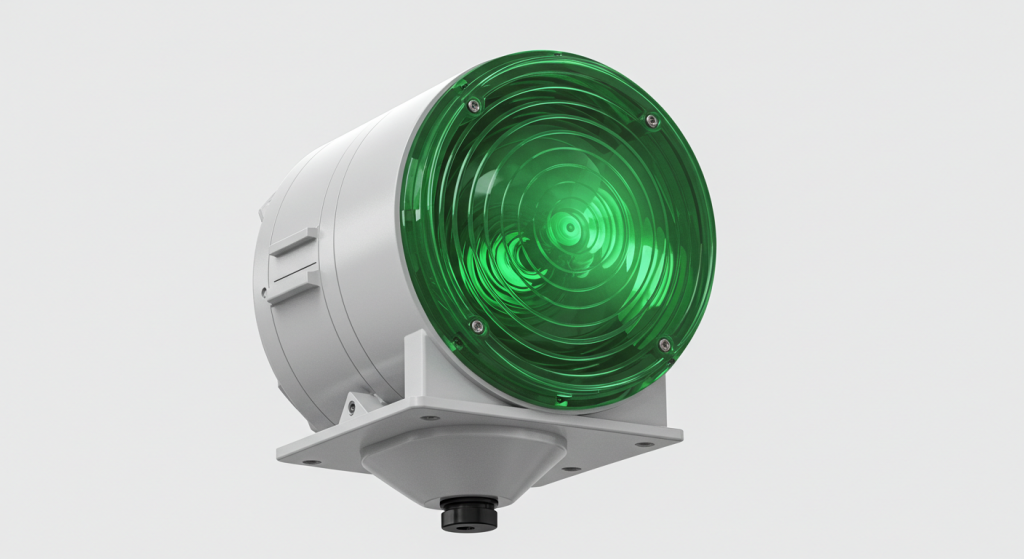Navigating the skies safely requires meticulous attention to detail, especially when it comes to identifying potential hazards. This is where solar powered obstruction lights come into play. Understanding How to purchase solar powered obstruction lights is crucial for anyone involved in aviation, construction, or even large-scale property management. These lights, often categorized as Low intensity flight warning lights, play a pivotal role in marking structures that could pose a danger to aircraft. Making an informed decision about which lights to buy is not just about cost; it’s about ensuring compliance, safety, and reliability.

The Importance of Obstruction Lighting
Obstruction lights are essential for the safe navigation of aircraft. They highlight structures such as tall buildings, communication towers, wind turbines, and even cranes. The visibility of these structures, especially at night or during inclement weather, is greatly improved by the use of these lights. The use of solar power makes them an environmentally friendly and cost-effective choice compared to traditional wired systems. The integration of Low intensity flight warning lights into existing and new developments is crucial to reduce the risk of collisions with aerial vehicles.
Understanding the Need: Why to Buy Airport Approach Lights
While obstruction lights primarily mark tall structures, understanding Why to buy airport approach lights is another critical aspect of aviation safety. Airport approach lights guide pilots during landing and takeoff, especially at night or during periods of poor visibility. These lights often work in tandem with obstruction lights to ensure a comprehensive system of visual cues. For instance, approach lighting systems enhance the safety of landing by providing a visual path, while obstruction lights help avoid collision. Integrating both systems is vital for any airport or air field, large or small. The correct deployment of both types of lighting is not just best practice, but often a regulatory requirement.

Key Factors in Purchasing Solar Powered Obstruction Lights
When beginning the process of understanding How to purchase solar powered obstruction lights, several factors must be considered. These lights aren’t one-size-fits-all; they have to match the specific application and environmental conditions of where they will be installed.
What Should I Look for When Buying Solar Security Lights?
Although the primary function of obstruction lights is for aviation safety, considering solar security light principles can offer valuable insights. Here’s what you should look for:
- Durability and Weather Resistance: Choose lights made with robust, weather-resistant materials to withstand exposure to sun, rain, and temperature fluctuations.
- Battery Life and Capacity: The batteries should be able to store sufficient power to operate the light throughout the night, even on cloudy days.
- Solar Panel Efficiency: Look for panels that have high energy conversion rates to effectively charge the batteries.
- Light Intensity and Visibility: Ensure the light provides sufficient intensity and visibility to meet FAA requirements and to be seen from a reasonable distance.
- Automatic Operation: The lights should have a photocell sensor to activate automatically at dusk and turn off at dawn, ensuring continuous, hands-off operation.
FAA Requirements for Obstruction Lighting
One of the most crucial aspects to consider when looking at How to purchase solar powered obstruction lights is the FAA regulations. The Federal Aviation Administration (FAA) sets standards for the type, intensity, and placement of obstruction lights. These standards are put into place to minimize the risk of aircraft collisions and ensure that they are visible for pilots.
Here are some of the key FAA requirements:
- Light Intensity: FAA standards specify minimum light intensity based on the height and location of the structure.
- Color: Typically, the FAA requires red or white lights, depending on the height and purpose of the obstruction.
- Flash Rate: Lights may need to flash at specific intervals to catch the attention of pilots.
- Type A/B/C: The FAA classifies obstruction lights into types, including Type A (low-intensity), Type B (medium-intensity), and Type C (high-intensity), based on their intensity and usage.
- Placement: The location and spacing of lights on a structure are detailed in FAA guidelines to provide optimal visibility.
It’s critical to consult the most recent FAA guidelines, which can be found on their website, and ensure the chosen solar powered obstruction lights are compliant to avoid any legal or safety issues.

What is the Standard for Obstruction Light?
The standard for obstruction lights isn’t just about meeting the basic FAA requirements; it also includes performance, reliability and construction standards. When evaluating How to purchase solar powered obstruction lights, you need to evaluate more than just the lighting itself. The standard for an obstruction light is generally:
- FAA Compliance: Ensuring that lights meet FAA standards is essential for avoiding any potential regulatory penalties.
- ICAO Standards: International Civil Aviation Organization (ICAO) standards should also be considered, particularly if the location is near an international airport.
- Quality and Certifications: Lights should be made from high-quality materials and should have relevant certifications to ensure their durability and performance.
- Warranty and Support: A reliable warranty and accessible customer support are crucial in case of any issues after the purchase.
- Ease of Installation: Lights designed for easy installation can save time and costs, especially for remote locations.
The Advantages and Disadvantages of Solar Powered Obstruction Lights
Understanding the pros and cons is also an important aspect in understanding How to purchase solar powered obstruction lights. While they offer numerous advantages, there are some limitations that must be considered.
Advantages of Solar Powered Obstruction Lights
- Energy Efficiency: They utilize solar energy, making them energy-efficient and cost-effective over time.
- Cost-Effectiveness: Solar power reduces electricity costs and installation costs by eliminating the need for electrical wiring.
- Environmental Friendliness: Solar power is a clean, renewable energy source, reducing the carbon footprint of your operations.
- Reliability: High-quality solar powered lights can operate reliably under varying weather conditions and without external power sources.
- Ease of Installation: Solar powered lights are easy to install, especially in remote areas without direct access to power grids.
What are the Disadvantages of Solar Outdoor Lights?
Solar powered lights are incredibly convenient, but they also have certain limitations you should be aware of, particularly when evaluating How to purchase solar powered obstruction lights:
- Initial Cost: The initial investment for solar powered lights can be higher than conventional options, but the long-term savings often offset this cost.
- Dependence on Sunlight: Performance can be affected by prolonged periods of cloudy weather or low light conditions.
- Battery Maintenance: Batteries may need replacement every few years, which can add to the overall cost.
- Potential for Vandalism: Solar panels and lights in unsecured locations might be susceptible to vandalism or theft.
- Limited Lifespan: Although most high-quality LED fixtures have a long lifespan, solar panels and batteries might need to be replaced more frequently.
Specific Product Considerations
While understanding general principles, looking into specific examples of solar powered obstruction lights can offer additional perspective for anyone wanting to figure out How to purchase solar powered obstruction lights.
The OL800 Solar Obstruction Light
The OL800 solar obstruction light is a specific model designed for aviation safety. It is typically a low-intensity red LED light and is often used on smaller structures, such as telecommunication towers and wind turbines. Some of the characteristics of lights like this include:
- FAA Compliance: Lights like the OL800 meet the necessary FAA regulations for obstruction lighting.
- Solar-Powered: The light is powered by solar energy, reducing the need for external power sources and minimizing energy costs.
- Long-lasting LED: Features long-lasting and high-intensity LEDs that are bright and visible over long distances.
- Easy installation: They often feature designs that are easy to install and do not require a complicated wiring process, making them ideal for use in remote locations.
- Weatherproof: The lights are constructed from materials designed to withstand harsh weather conditions, ensuring optimal performance and longevity.
Aviation Obstruction Lights
Aviation obstruction lights serve the critical function of marking potentially hazardous structures to ensure the safety of air traffic. These lights are typically available in a variety of configurations and can be either fixed or flashing. The selection of obstruction light for a particular application depends on the structure’s height, location, and local regulations. This is another important facet when looking at How to purchase solar powered obstruction lights.
- Variety of Intensities: Obstruction lights are designed in several intensity levels (low, medium, and high), each suited for different scenarios.
- Colors: Typically red or white lights are used. Red lights are used more commonly for general obstruction lighting, while white lights can be used during daylight hours.
- Mounting Options: Lights can be mounted on various surfaces including poles, masts, and on the actual structure using a variety of mounting solutions.
- Monitoring Systems: Some systems include optional remote monitoring capabilities that allow for maintenance alerts and light status checks.
- Emergency Backup: Some advanced lights can offer an internal backup battery to ensure operation even during prolonged periods of cloud cover.
Aviation Obstruction Light Price
The price of aviation obstruction lights can vary depending on several factors, including the light intensity, manufacturer, certifications, and features. When considering How to purchase solar powered obstruction lights, understanding the cost factors is important for planning purposes:
| Type of Light | Approximate Price Range | Features |
|---|---|---|
| Low-Intensity Solar LED | $200 – $500 | Ideal for smaller obstructions, meets basic FAA requirements, long battery life. |
| Medium-Intensity Solar LED | $500 – $1,000 | Suitable for taller structures, higher light intensity, advanced battery technology. |
| High-Intensity Solar LED | $1,000+ | Used for very tall obstructions and near airports, highest light output, advanced features. |
| Dual (Red/White) Solar LED | $800 – $1500+ | Provides both red night time lighting and white daytime lighting, meets complex standards. |
Prices are also impacted by the presence of features like remote monitoring, the quality of solar panels, the type of batteries used, and certifications. When shopping, one should consider the entire cost picture to include things like maintenance, possible repair, or component replacement costs in the long term.
LED Obstruction Lights
LED (Light Emitting Diode) obstruction lights have become the standard in aviation due to their numerous advantages over traditional incandescent or halogen lights. Here’s why they are essential when considering How to purchase solar powered obstruction lights:
- Energy Efficiency: LEDs consume significantly less energy compared to traditional lights, leading to lower energy costs.
- Long Lifespan: LEDs have a much longer operational lifespan, which reduces maintenance and replacement costs.
- Durability: LEDs are more durable and resistant to vibration and impact, making them ideal for harsh environments.
- Instant Illumination: LEDs provide instant light output without the warm-up time associated with traditional lights.
- Precise Illumination: LEDs provide a focused and direct light source, which is especially important for obstruction lighting.
Obstruction Lights for Buildings
Obstruction lights on buildings are necessary to ensure the safety of air traffic around built environments. Skyscrapers and tall structures within flight paths should be equipped with obstruction lights to meet FAA guidelines. When considering How to purchase solar powered obstruction lights for buildings, you must take the following into account:
- Height and Location: The height of the building and its proximity to airports or flight paths determine the required light intensity and configuration.
- Placement and Spacing: Obstruction lights should be placed at the highest points and corners of the building, with spacing determined by FAA regulations.
- Daytime/Nighttime Operation: Some obstruction lighting systems may include daytime white lights and nighttime red lights.
- System Integration: It’s best to integrate the lights into the building’s overall design, considering both visibility and aesthetic appeal.
Aviation Obstruction Lighting Requirements
The aviation obstruction lighting requirements are comprehensive, and it is essential for anyone involved in the planning, building, or management of tall structures to understand them. When exploring How to purchase solar powered obstruction lights, you must consider the following points:
- FAA Standards: Compliance with FAA standards (14 CFR Part 77) is compulsory for all aviation obstruction lighting.
- Structure Height: The specific requirements vary depending on the height of the structure, often requiring higher intensities for taller structures.
- Light Types: The FAA specifies the intensity, color, and flash rates of the required lights.
- Dual Lighting Systems: Depending on location and height, the FAA might require dual systems that offer both red lights at night and white lights during the day.
- Proper Installation: Ensuring lights are installed according to specifications is crucial for avoiding fines and potential hazards.
Obstruction Light Requirements
Obstruction light requirements extend beyond simply complying with FAA regulations. A holistic approach should consider functionality, durability and reliability, alongside strict adherence to regulatory demands. Consider the following requirements when understanding How to purchase solar powered obstruction lights:
- Light Intensity: The light intensity should be adequate to provide adequate visibility for pilots under varied visibility conditions.
- Visibility Range: The light should have a sufficiently long range of visibility to ensure timely recognition by approaching aircraft.
- Flash Rate and Pattern: If flashing lights are required, the proper rate and pattern should be implemented for each location.
- Power Source Reliability: Solar-powered systems must maintain reliable operation even with fluctuating sunlight levels, and backup systems are recommended.
- Maintenance Accessibility: Designing the installation so that regular maintenance can be completed safely is important for the long-term reliability of the lighting.
Aviation Light for Towers
Aviation lights for towers are designed to mark obstacles such as communication towers, wind turbines, and power transmission towers. These are essential for preventing air collisions and come in various configurations to meet specific needs. When you are looking at How to purchase solar powered obstruction lights specifically for towers, the following items should be considered:
- Types of Towers: The specific type of tower, whether it is a broadcast tower or a cell tower, can influence the type of lighting required.
- Tower Height: The taller the tower, the more powerful the obstruction light typically needs to be.
- FAA Compliance: Towers must be marked to comply with FAA standards for visibility and obstruction.
- Remote Monitoring: Many systems now include remote monitoring features to keep track of their status and provide alerts for maintenance needs.
- Weather Resistance: The lights must be designed to withstand the rigors of the elements and function reliably in harsh conditions.
Conclusion
Choosing the right solar powered obstruction lights is a critical step in ensuring aviation safety. It is critical to understand How to purchase solar powered obstruction lights, which includes evaluating several key components like compliance with FAA regulations, understanding the types of lights, costs, and advantages. The careful selection and deployment of these lights, including both Low intensity flight warning lights and airport approach lights, are a core component of responsible aviation and development. Knowing Why to buy airport approach lights and how they integrate with obstruction lights is an important part of this as well. This guide can help you make an informed decision and understand the complexities that are involved with the selection process. By focusing on specific needs and environmental conditions, the appropriate obstruction lights can be selected, reducing risks, and ensuring safety across the board.